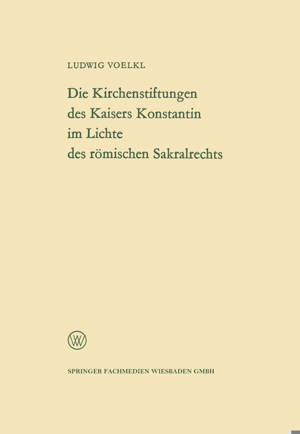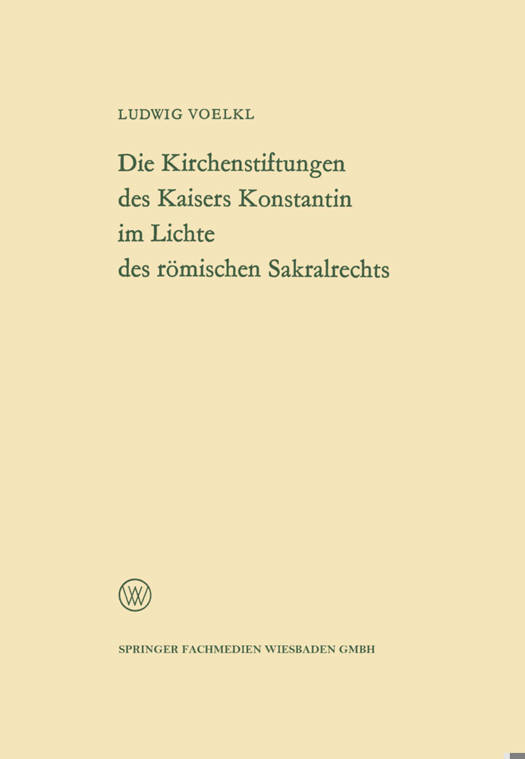
- Afhalen na 1 uur in een winkel met voorraad
- Gratis thuislevering in België vanaf € 30
- Ruim aanbod met 7 miljoen producten
- Afhalen na 1 uur in een winkel met voorraad
- Gratis thuislevering in België vanaf € 30
- Ruim aanbod met 7 miljoen producten
Zoeken
Die Kirchenstiftungen Des Kaisers Konstantin Im Lichte Des Römischen Sakralrechts
Ludwig Voelkl
€ 64,45
+ 128 punten
Omschrijving
1. The concepts "purum", "religiosum", "sacrum" and "sanctum", for- mulated by Roman sacrallaw, are by nature possessory titles. They identify objects, properties and persons laid claim to by one or the other deity, or the possessory tide whlch was transferred to such deity by persons. In the one case, the theophanies and prodigia, ascribed to supernatural powers, had possession changing effects; in the other, the vota, burials, sanctions, dedi- cations and consecrations were performed by people. 2. If one compares the Constantine charters of foundation inserted by the Liber Pontificalis in the Vita of Pope Sylvester with the "leges templorum" required by Roman sacral law, then in both cases a striking similarity in structure and formulation can be found. In the one instance, as in the other, the date, name and charge of the founder, name of the deity and the nature of the object of endowment, the fittings and the amount of the endowment capital are noted with the most predse exactness. The church buildings founded by the Emperor are given the designation "basilica". Therefore, they have an equality of status with the official buildings that are recognized as such by public law. In these were performed the ritual ceremonies in honor of the Christian God recognized by the State as weil as the official acts of the internal ecclesiastical jurisdiction, whlch enjoyed very special privileges. 3.
Specificaties
Betrokkenen
- Auteur(s):
- Uitgeverij:
Inhoud
- Aantal bladzijden:
- 98
- Taal:
- Duits
- Reeks:
- Reeksnummer:
- nr. 117
Eigenschappen
- Productcode (EAN):
- 9783322983824
- Verschijningsdatum:
- 1/01/1964
- Uitvoering:
- Paperback
- Formaat:
- Trade paperback (VS)
- Afmetingen:
- 170 mm x 244 mm
- Gewicht:
- 172 g

Alleen bij Standaard Boekhandel
+ 128 punten op je klantenkaart van Standaard Boekhandel
Beoordelingen
We publiceren alleen reviews die voldoen aan de voorwaarden voor reviews. Bekijk onze voorwaarden voor reviews.








